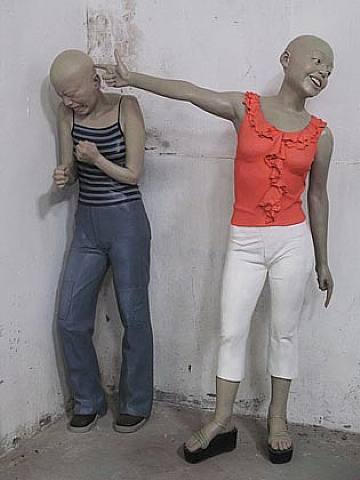Eddie Adams’ photo of General Nguyen Nguc Loan executing a bound Vietcong prisoner of war remains one of the searing indictments of the criminal conduct of that war.
Adams went to his grave insisting that the photograph was being misused because the execution was a justifiable act in the context of the battle for Saigon. That may be so, but the literal dimension of the image has from the beginning been irrelevant to its distribution, interpretation, and acclaim. The photograph’s rhetorical power comes from its symbolic and ethical implications in respect to the justification of the war itself. Whatever else was happening on the street that day, this image provides stunning illustration that the war was spiraling far out of control–militarily, politically, and morally.
If this interpretation of the photograph is valid, it nonetheless remains one of many. As John and I elaborate in No Caption Needed, iconic images are important not only because of the role the images play at the time of their initial distribution, but also subsequently as they become templates for artistic imitation and improvisation across a wide range of media, arts, topics, and standpoints. This image from a recent art fair in New York City is only the latest example:
According to the review of the show, you are looking at Xiang Jing’s “Bang!” (2002), a work in painted fiberglass. That this image was selected from the hundreds at the show probably is testament to the continuing power of the iconic image, although we also should recognize the reviewer’s rationale: “Ms. Xiang’s sculpture embodies the mood of the first Asian Contemporary Art Fair . . . Fizzy and entertaining on the surface, it has a disquieting underside.” Likewise, the reviewer remarks that “the playful surface of ‘Bang!’ masks a half-repressed trauma.”
I’m not so sure that anything is being “masked” or “half-repressed.” The language of art criticism, and not least its depth psychology, really doesn’t get this one right. There is no underside to this image: the horror is right there on the fizzy surface.
One might wonder why Adams’ photograph was mentioned at all. Jing’s artwork has reversed virtually everything of note in the original image: the figures are women instead of men, civilians instead of soldiers, wearing stylish contemporary clothes instead of the de facto uniforms of the past, highly expressive instead of stony faced or having a tight grimace, hairless instead of having hair, positioned right to left instead of left to right, backed into a corner instead of an open street, colored statues rather than people in a black and white photograph, and fictional instead of real. The “killer” is even more obviously transformed, as she is using a finger instead of a gun, facing the viewer, looking away from the victim, and smiling. And why is a Chinese artist appropriating American photojournalism about the Vietnam War to depict contemporary young women?
Just as the meaning of the iconic photograph quickly escaped the photographer’s sense of scene, our response to this work of art is not likely to be tied to knowledge of the artist’s intentions. If there is no intended connection between the two images, then the sculpture still is troubling, if somewhat puzzling. If the viewer makes the connection, intended or not, part of the experience of the artwork, then it instantly becomes deeply disturbing. Now the social violence of adolescence acquires the killing power of warfare, while the passage of time suggests that killing is becoming ever more casual, routine, normative, and even enjoyable. And just as the traumatic image from Vietnam lives on it the contemporary artwork, so does a history of war, dislocation, and layered betrayals continue to shape contemporary life, not least in societies experiencing both hidden violence and comprehensive modernization.
Don’t be too quick to guess which nation I might be referring to. On reflection, it can make sense after all to speak of surface and depth. “Bang!” might place the medium of photojournalism under the medium of sculptural art, as with a palimpsest, to suggest that under the fizzy surface of modern consumer culture there still are layers of personal and collective violence.
Finally, a footnote: The title “Bang!” may be a double allusion, including both the Adams photograph and another iconic image from the Vietnam War: the photograph of a naked girl running away from the napalm drop on her village. The name of the village was Trảng Bàng.

Discussion